


Kitchen pollution guidance
Approximately four million people die prematurely from illnesses attributed to indoor air pollution generated by the use of highly polluting fuels such as charcoal or wood for cooking. Explore our guidance on mitigating exposure to cooking emissions in kitchens.
Share updates on social media with #CleanAirKitchens so we can see how you are using our guide.
Clean air for kitchens

Clean Air for Kitchens - Introduction

Clean Air for Kitchens - Targeted recommendations
General recommendations
In-kitchen air quality is affected by many factors, such as the cooking fuel type, cooking method (e.g. frying, boiling) and ventilation conditions amongst others.
The guide builds upon the studies carried out by a group of international researchers from high, middle and low-income countries who collaborated on the ‘Clean Air Engineering for Cities (CArE-Cities)’, ‘Clean Air Engineering for Homes (CArE-Homes)’, and the ‘Knowledge Transfer and Practical Application of Research on Indoor Air Quality (KTP-IAQ)’ projects.
Adopt efficient cooking methods and techniques that reduce the release of fumes; for example, by reducing cooking duration and adopting healthier food options and cooking styles.
Distribution and training in the use of devices such as electric pressure cookers and rice cookers can help to reduce cooking duration.
The threat of climate change is driving national and global agendas toward cleaner fuels and renewable energy.
The use of polluting fuels (such as charcoal and kerosene) for cooking should be phased out by making clean fuels and compatible cookstoves more accessible and affordable.
Direct human exposure to indoor emissions from such fuels contributes to significant health impacts.
Opening windows and doors during cooking and cleaning can reduce occupant exposure and protect health.
Installing functioning extractor fans or other low-cost home-made air purification technologies such as the Corsi-Rosenthal box in kitchens would also limit the build-up of pollutants and steam, reducing health risks.
Download the adopt healthy ventilation practices guidance (PDF)
Home occupants can reduce exposure to air pollution by understanding the levels of indoor pollutants.
Monitoring easily measurable indoor air quality parameters such as particulate matter, carbon monoxide or carbon dioxide is a practical preventive safety measure.
Download the consider monitoring in-kitchen pollution guidance (PDF)
Dusting, cleaning with cleaning products, smoking, dust re-suspension, spraying mosquito repellent, burning incense or candles, painted surfaces, and heating, all contribute to indoor air pollution.
Providing adequate ventilation and cleaning regularly to avoid the build-up and movement of dust should be taken.
Download the consider other sources of in-kitchen air pollution guidance (PDF)
Because cooking emissions pose a risk to human health, passive occupants (people not involved in cooking such as children, elderly people, pregnant women and those with respiratory allergies or diseases) should avoid the kitchen during cooking.
Those who cook should leave the kitchen whenever no supervision is needed to reduce their exposure to cooking emissions.
Regulatory bodies should provide and enforce green building codes that consider improved indoor air quality, such as:
- Allocating larger volumes for kitchens
- Including more/wider windows and balconies
- Installing indoor air quality monitoring devices (e.g. carbon dioxide monitors)
- Installing suitable air ventilators (e.g. cooker hoods/extractor fans)
- Installing chimneys for open and ventilated kitchen designs and providing cleaner fuel connections (especially natural gas and electric cooking)
- Setting up compulsory training sessions for building designers.
Download the consider indoor air quality when designing new homes guidance (PDF)
Indoor air pollution and strategies for mitigation should be part of national awareness campaigns with a special focus on people more involved in household activities.
The increasing availability of affordable indoor air quality monitoring devices could support relevant hands-on exercises and home occupant-led experiments.
Download the spread awareness on health kitchen practices (PDF)
Keep in mind that adjusting cooking style, using cleaner cooking fuels, reducing passive occupancy, improving ventilation conditions and considering the kitchen design when refurbishing a home will improve in-kitchen air pollution.
Therefore, a holistic approach, with communication and participation among home occupants, homeowners, builders, and local councils is crucial for overall change and effective exposure reduction.
Download the involve everybody and work together guidance (PDF)
Solutions can be co-designed with local communities and best practices can be implemented through direct collaboration via community science projects, e.g. collaborating with homeowners to co-design solution-oriented studies.
Barriers to the adoption of clean fuels and cookstoves include affordability and a misconception of a change in the taste of food.
Training programmes and demonstrations can address misconceptions to reduce the use of polluting fuels. These programmes can improve local awareness of in-kitchen air pollution exposure and mitigation measures among homeowners, builders, local councils, and regulatory bodies.
Community science and participatory research can also enable individuals to share their experiences and/or concerns (e.g. healthy cooking practices) with researchers and policymakers for all- around actions for plausible adoption and implementation.
Download the set up community science projects guidance (PDF)
Targeted recommendations
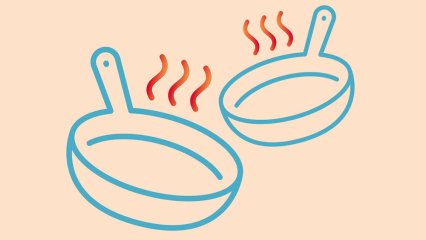
Adopting best practices that improve in-kitchen air quality, especially during frying, can significantly reduce occupants exposure to fine particulate matter emissions during cooking.
For home occupants
- Improve ventilation during frying by opening the doors and windows and switching on the extraction fan (if available)
- Use air fryer where feasible to replace frying
- Reduce the amount of food fried during cooking
- Use alternative cooking methods such as steaming or oven roasting (where ovens are available and affordable) and increase the consumption of raw foods, when deemed safe
- Protect your family and friends by keeping them out of the kitchen when you are frying so they inhale fewer damaging emissions.
For builders and homeowners
- Install an extraction hood directly over the stovetop
- Install a smoke alarm or carbon dioxide monitor to warn of pollution build-up
- Ensure proper exit of exhaust emissions to avoid their re-entry to other nearby houses.
For local councils
Spread awareness of the health effects of indoor air pollution, emphasising the importance of adopting best ventilation practices and reducing the use of high particle-emitting activities such as frying.
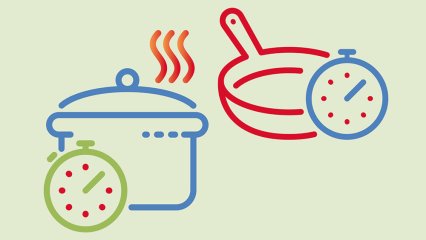
Choose recipes and meals that take less time to cook to reduce overall in- kitchen pollution.
For home occupants
Minimise cooking time by choosing simpler recipes and meals that involve less grilling and frying.
For builders and homeowners
Include a safety sheet in kitchens that recommends healthy and safe cooking practices, such as reducing cooking duration when possible.
For local councils
- Promote the benefits of simple, fast, healthy cooking and vegetarian diets
- Promote and provide training in the use of devices such as pressure cookers and rice cookers, which can reduce cooking times, especially for lentils, beans, meat and rice.

Kitchens using a combination of LPG and electric cookers observed a reduction in carbon dioxide levels of more than one-third compared with those using kerosene.
Use cleaner cooking fuels, such as LPG and natural gas, to substantially reduce exposure to indoor air pollutants.
For home occupants
Choose cleaner cooking fuels and stoves, and maintain stoves and exhaust fans regularly to ensure proper ventilation efficiency.
For builders and homeowners
Include a safety sheet in kitchens that recommends healthy and safe cooking practices, such as reducing cooking duration when possible.
For local councils
- Promote the benefits of simple, fast, healthy cooking and vegetarian diets
- Promote and provide training in the use of devices such as pressure cookers and rice cookers, which can reduce cooking times, especially for lentils, beans, meat and rice.
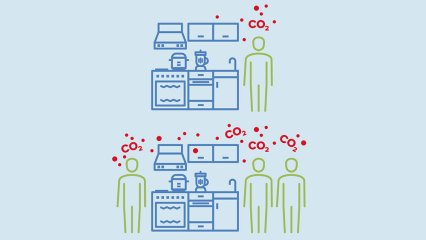
It also increases the CO2 levels, which can be over 7% higher with two or more occupants compared with one occupant.
Minimise passive kitchen occupancy during cooking to eliminate avoidable exposure and reduce carbon dioxide levels.
For occupants
- Prevent passive occupants (i.e. those not participating in cooking, such as children) from inhabiting the kitchen during cooking
- Leave the kitchen during prolonged cooking sessions that do not require continuous supervision.
For builders and homeowners
Design kitchens with a spacious area, such as a balcony or adjacent hallway, (where possible), so that toddlers can be supervised during cooking.
For local councils
Spread awareness about the benefits of protecting occupants (especially children, the elderly, people with respiratory diseases, and other vulnerable groups) from exposure to cooking fumes.
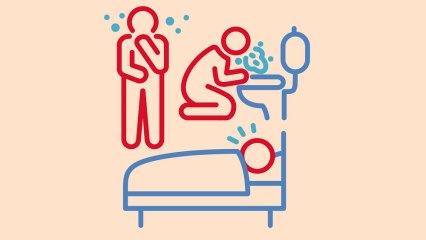
Monitor in-kitchen carbon dioxide levels and particulate matter to alert occupants to improve ventilation when levels exceed prescribed CO2 and PM2.5 levels.
For home occupants
- Install a carbon dioxide monitor to alert occupants about the ventilation conditions when levels exceed permissible limits
- Install a particulate matter monitor to alert occupants about the levels of indoor emissions from cooking and other relevant sources
- Install a carbon monoxide monitor to alert occupants in case of fire or increased levels of gas
- Monitors are available separately or together in one unit, showing values as a traffic light system (green, amber, red) in layman format, warning occupants to open the windows, switch on the extraction fan, or leave the room.
For builders and homeowners
- Make provisions for installing carbon dioxide, carbon monoxide, and particulate matter monitors
- Ensure kitchens have an effective ventilation system.
For local councils
- Prepare local guidelines for indoor air quality monitoring installations
- Subsidise and facilitate the installation of carbon dioxide, carbon monoxide and particulate matter monitors in indoor kitchens
- Promote the benefits of monitoring to achieve good indoor air and ventilation among local communities.
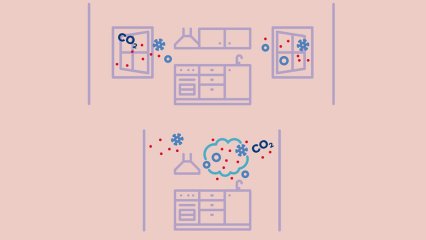
This is because they allow cooking emissions to disperse more effectively.
Small-volume kitchens accumulate particulate matter and carbon dioxide concentrations more quickly than larger-sized kitchens because there is less space for dispersion.
For home occupants
- If there is a choice, choose a home with a large kitchen
- If a small kitchen is inevitable, install an extraction fan/hood to improve the volume of mixing air and minimise daily exposure
- Open the windows and doors during cooking.
For builders and homeowners
- Dedicate larger floor areas for kitchens in new homes or design higher ceilings to increase kitchen volumes
- Ensure kitchens have large windows, doors, and/or balconies for improved ventilation and exhaust dissipation
- Install the stove/oven close to the window to increase the rate of dissipation of fumes.
For local councils
- Promote the benefits of larger volume kitchens with large windows (and possibly balconies) to dissipate cooking fumes and improve indoor air quality
- Create an easy-to-follow best-practice guide for homeowners to improve ventilation and air quality in kitchens
- Provide a standard code for builders and/or homeowners for kitchen design during new construction or when retrofitting existing homes.
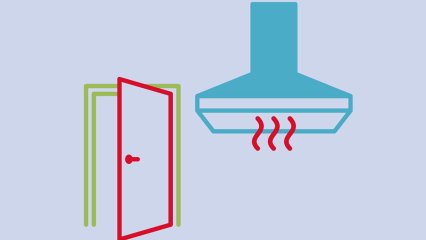
Extraction fans, along with opened doors and windows, can reduce kitchen occupants’ exposure to fine particles by two-fold.
For home occupants
- Install a retrofit extraction fan or hood in the kitchen, if possible
- Consider installing an extraction fan at the window to increase the ventilation rate
- Keep the extraction fan on during cooking
- Open kitchen windows and doors during and after cooking, if weather conditions permit and safety precautions are not compromised, to remove potential residual contaminants
- Ensure that the cooking stove and oven are near a window for faster removal of cooking fumes
- Regularly maintain cooking stoves and exhaust fans to ensure their efficient operation.
For builders and homeowners
- Provide infrastructure (e.g. electricity and electrical connections) in homes for extraction fan installation in the kitchen.
- Provide double sliding doors/windows with mesh for ventilation and insect control.
For local councils
- Provide awareness materials such as pamphlets and guides on the importance of improved ventilation conditions indoors, especially in the kitchen during cooking
- Provide a standard code for builders and/or homeowners for kitchen design during new construction or when retrofitting existing homes.

Maintaining thermal comfort is crucial to the health of home occupants. Most kitchens in low- and middle-income homes exceed the American Society of Heating, Refrigerating and Air-Conditioning Engineers (ASHRAE) standard (RH >40%, temperature >23°C) for thermal comfort. In-kitchen conditions can be improved by using extractor fans/hoods during cooking.
For home occupants
Use extraction fans/hoods during cooking and keep windows open during cooking if the weather permits.
For builders and homeowners
Design kitchens with high ceilings and larger windows/balconies to allow for better thermal comfort conditions, especially in warmer/humid countries.
For local councils
Establish local thermal comfort standards for homes to be considered in building design and to spread awareness amongst home occupants.
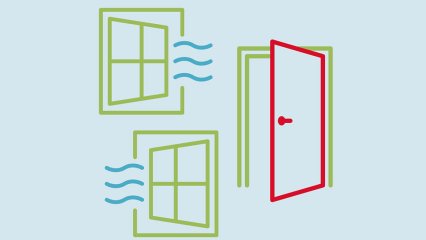
Keep windows and doors open during cooking whenever possible to improve the ventilation and reduce the in-kitchen carbon dioxide levels.
For home occupants
Always keep windows and doors open during cooking whenever the weather permits and when it is considered safe.
For builders and home owners
- Install mosquito screens on windows and doors to exclude flying insects in affected countries.
- Install CO2 monitors that provide easy-to-understand green, amber, and red traffic light colour-coding to warn occupants to increase kitchen ventilation during cooking.
For local councils
Promote the importance of natural ventilation in kitchens during cooking.

Reduce fuel stacking by encouraging a switch to cleaner cooking fuels and stoves. This can be achieved by making clean fuels and compatible cookstoves and devices accessible and affordable.
For home occupants
- Reduce the use of polluting fuels
- Use cookstoves compatible with clean fuels
- Use devices such as pressure cookers to reduce cooking time.
For builders and homeowners
- Set up supply chains for the delivery and maintenance of LPG cylinders
- Provide infrastructure and space to accommodate the use of clean cooking fuels and devices.
For local councils
- Make clean fuels more affordable than polluting fuels through subsidies and pro-poor tariffs and tax the use of polluting fuels
- Consider subsidising the first few KWh of electricity supply to encourage the use of e-cookers, especially for low-income households
- Demonstrate and provide training in the use of energy-efficient cooking devices and cooking techniques.
